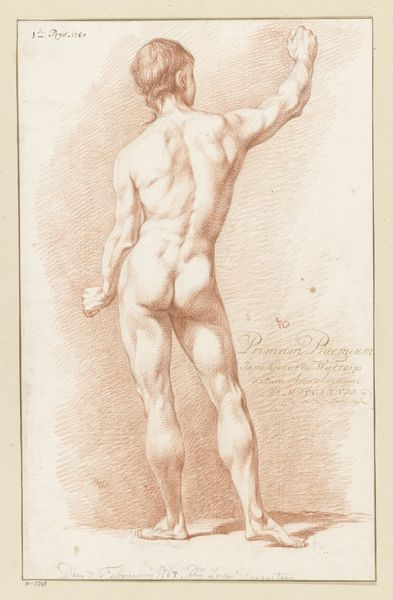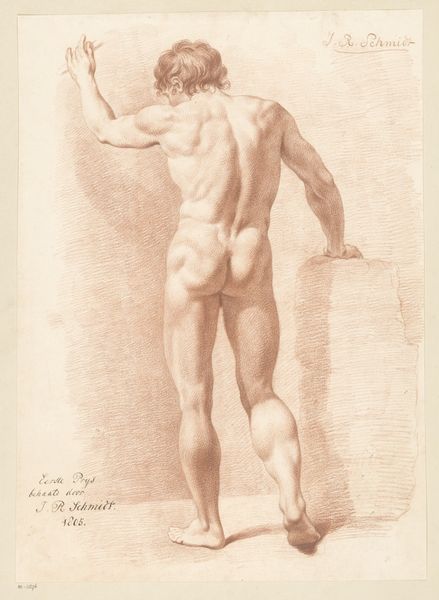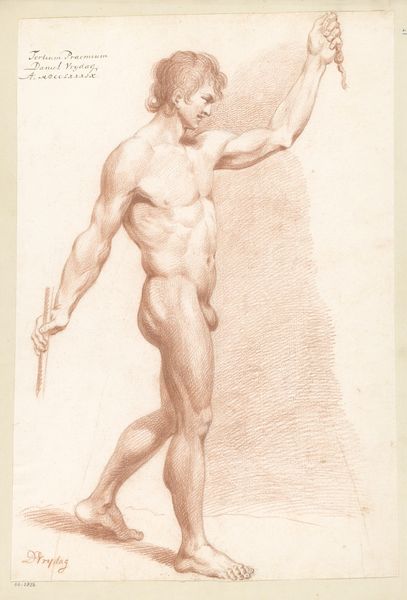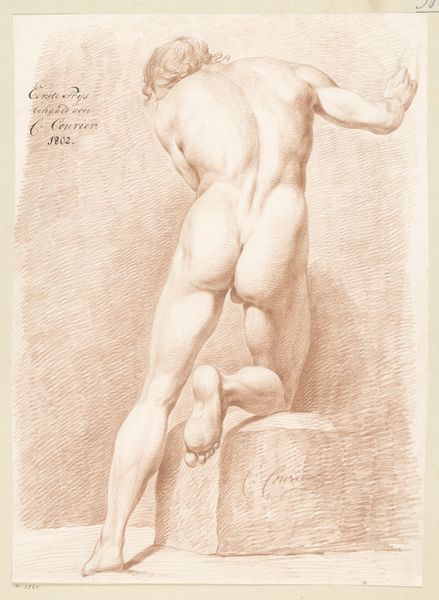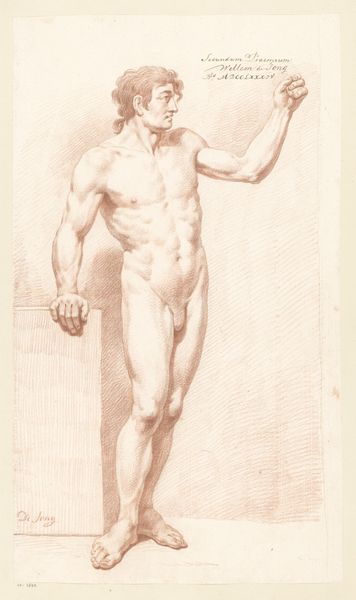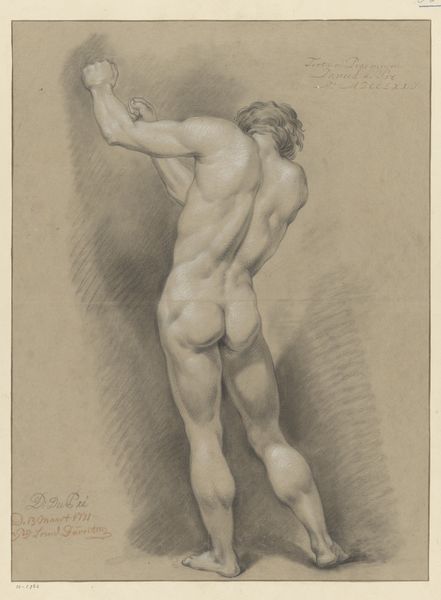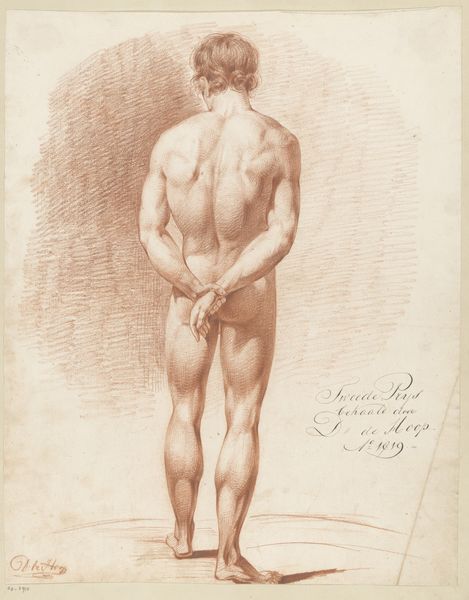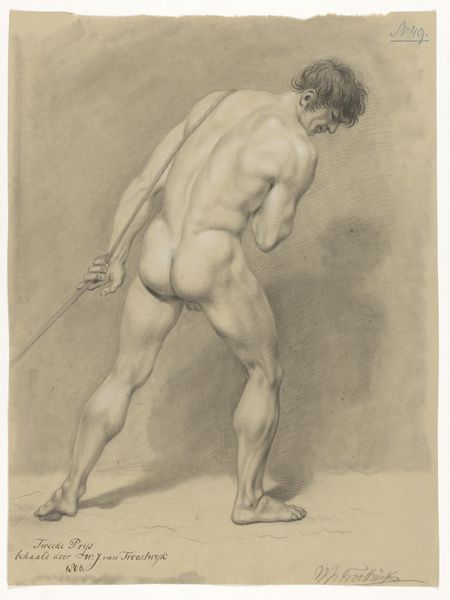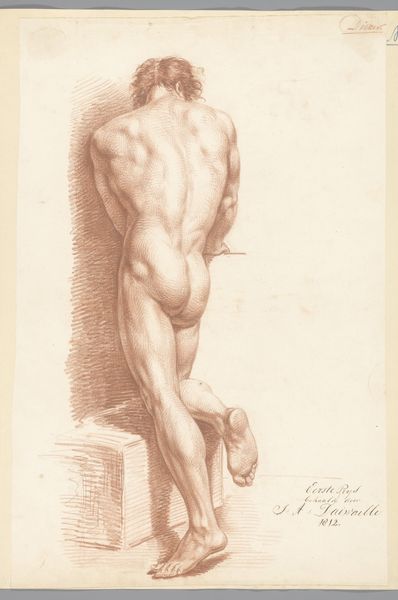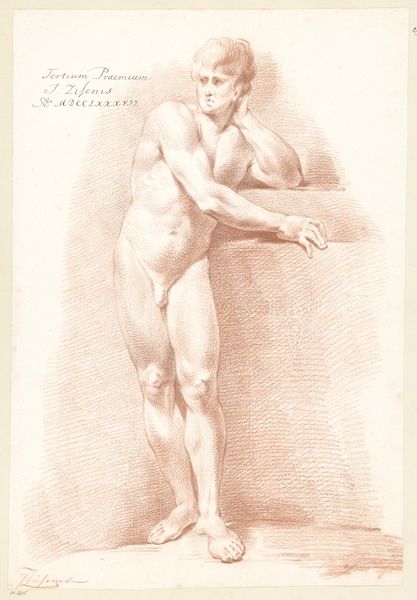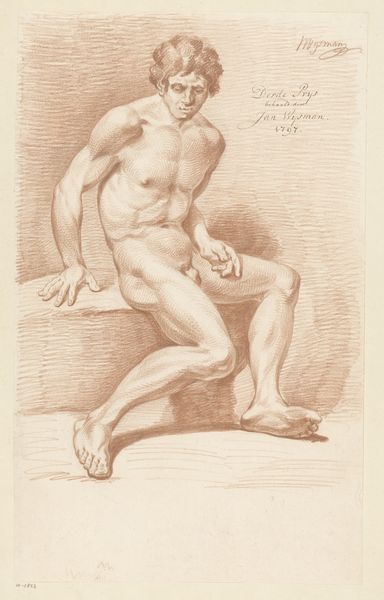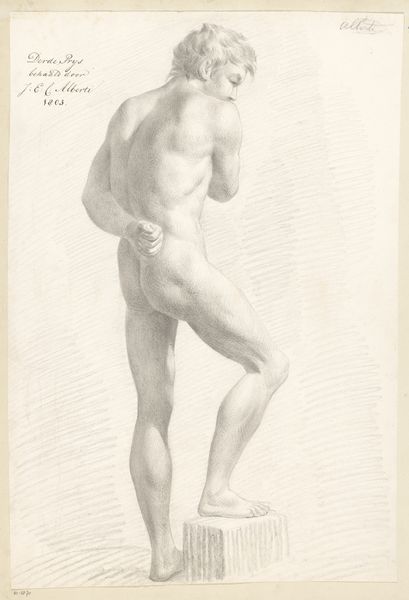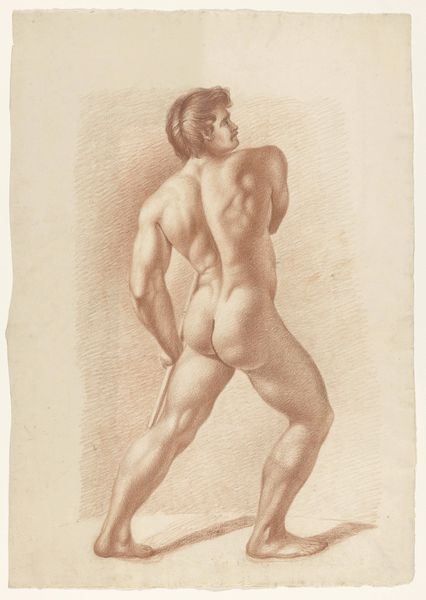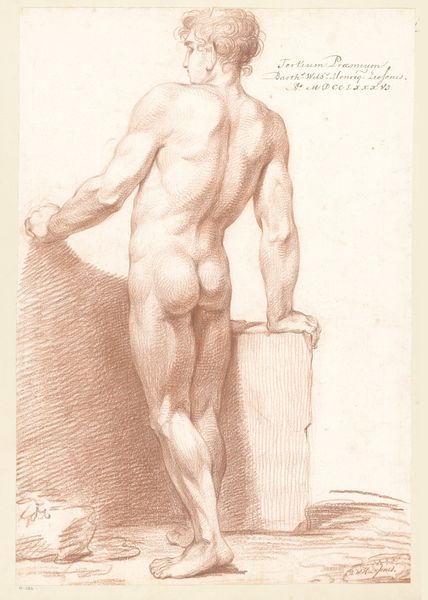
Staand mannelijk naakt, op de rug gezien (1e prijs 1803) Possibly 1803
0:00
0:00
drawing, dry-media, charcoal
#
drawing
#
charcoal drawing
#
dry-media
#
charcoal
#
academic-art
#
nude
Dimensions: height 584 mm, width 445 mm
Copyright: Rijks Museum: Open Domain
This sanguine drawing was made by Jan Willem Pieneman in 1803. The male nude, viewed from behind, stands as a testament to classical ideals of beauty and strength. The pose echoes that of ancient sculptures, recalling the contrapposto stance seen in classical Greek art—a subtle shift in weight that brings the figure to life. This echoes through time, appearing again and again in Renaissance and Baroque art, each time imbued with new cultural significance. Consider the use of the male nude, dating back to antiquity as a symbol of heroism, virtue, and the divine. Yet, its meaning has been continuously reshaped. Here, the figure's averted gaze invites contemplation on the nature of the body itself. It speaks to the interplay between vulnerability and raw power and engages us on a profoundly human level. The recurring motif of the nude form connects us to a lineage of artistic expression and its enduring power to evoke emotion, reminding us of the cyclical nature of cultural memory and the ever-evolving narratives we weave around ourselves.
Comments
No comments
Be the first to comment and join the conversation on the ultimate creative platform.
